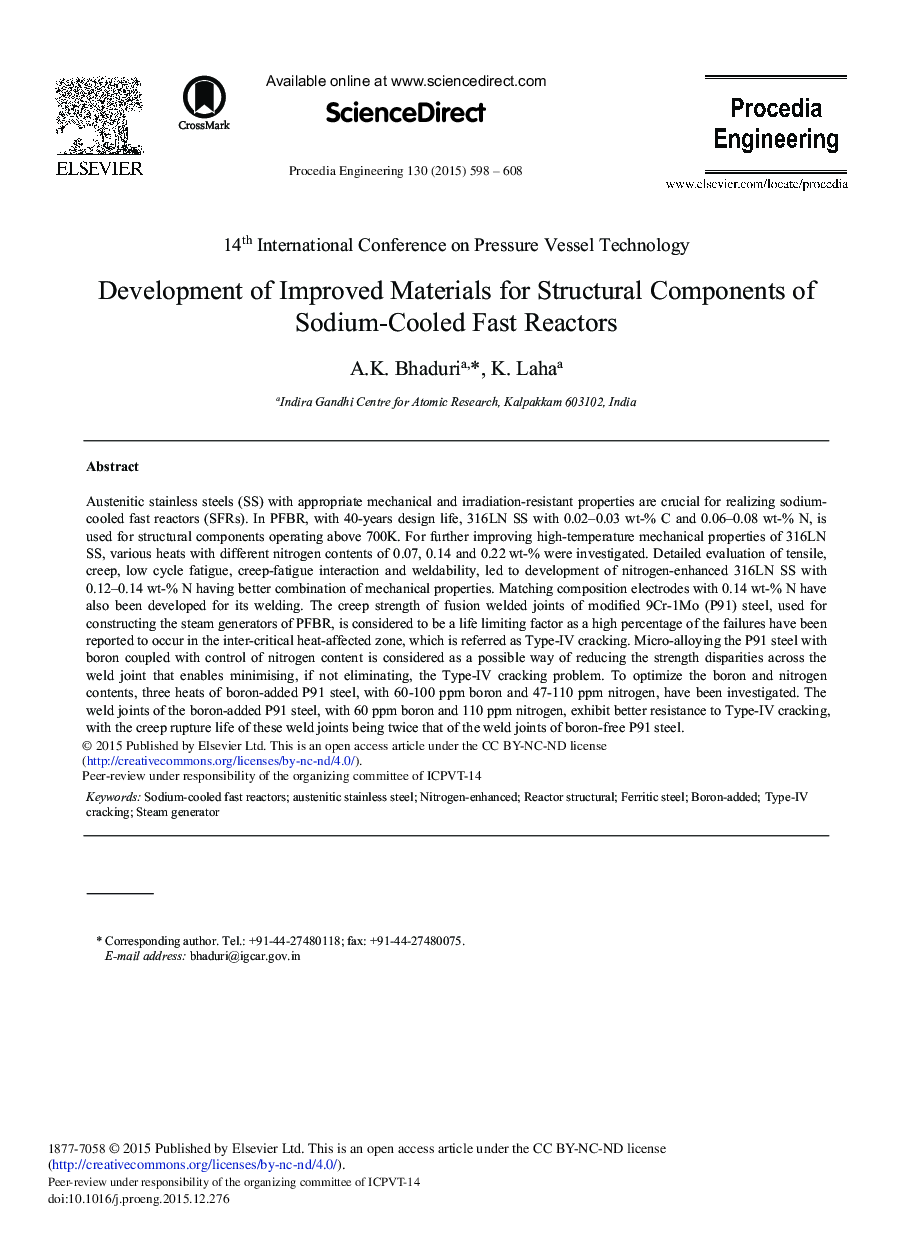| کد مقاله | کد نشریه | سال انتشار | مقاله انگلیسی | نسخه تمام متن |
|---|---|---|---|---|
| 854573 | 1470696 | 2015 | 11 صفحه PDF | دانلود رایگان |
Austenitic stainless steels (SS) with appropriate mechanical and irradiation-resistant properties are crucial for realizing sodium-cooled fast reactors (SFRs). In PFBR, with 40-years design life, 316LN SS with 0.02–0.03 wt-% C and 0.06–0.08 wt-% N, is used for structural components operating above 700K. For further improving high-temperature mechanical properties of 316LN SS, various heats with different nitrogen contents of 0.07, 0.14 and 0.22 wt-% were investigated. Detailed evaluation of tensile, creep, low cycle fatigue, creep-fatigue interaction and weldability, led to development of nitrogen-enhanced 316LN SS with 0.12–0.14 wt-% N having better combination of mechanical properties. Matching composition electrodes with 0.14 wt-% N have also been developed for its welding. The creep strength of fusion welded joints of modified 9Cr-1Mo (P91) steel, used for constructing the steam generators of PFBR, is considered to be a life limiting factor as a high percentage of the failures have been reported to occur in the inter-critical heat-affected zone, which is referred as Type-IV cracking. Micro-alloying the P91 steel with boron coupled with control of nitrogen content is considered as a possible way of reducing the strength disparities across the weld joint that enables minimising, if not eliminating, the Type-IV cracking problem. To optimize the boron and nitrogen contents, three heats of boron-added P91 steel, with 60-100 ppm boron and 47-110 ppm nitrogen, have been investigated. The weld joints of the boron-added P91 steel, with 60 ppm boron and 110 ppm nitrogen, exhibit better resistance to Type-IV cracking, with the creep rupture life of these weld joints being twice that of the weld joints of boron-free P91 steel.
Journal: Procedia Engineering - Volume 130, 2015, Pages 598-608
